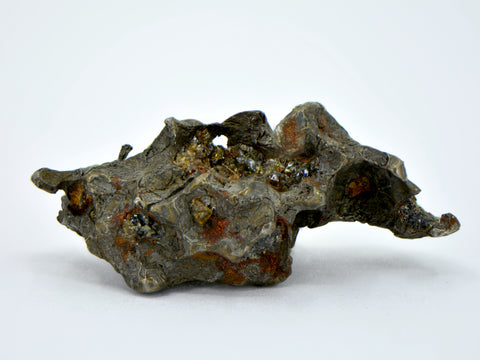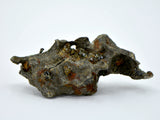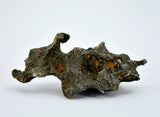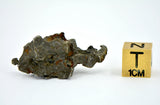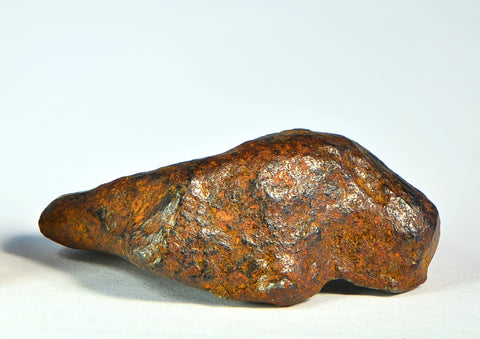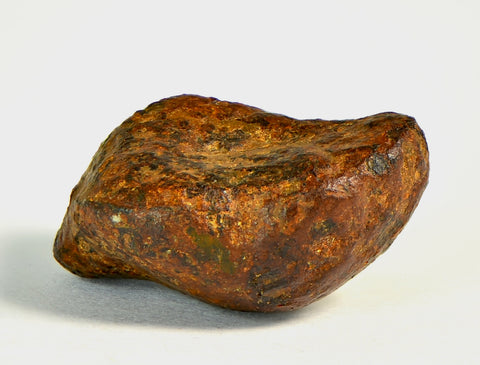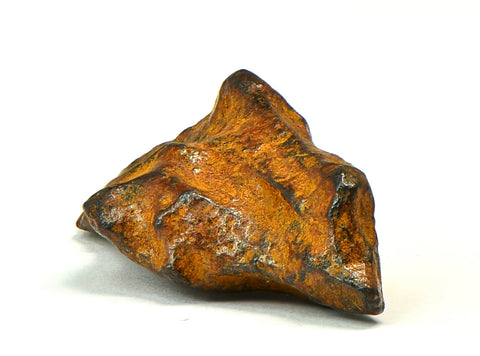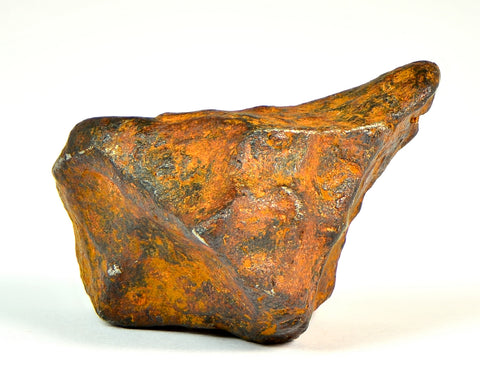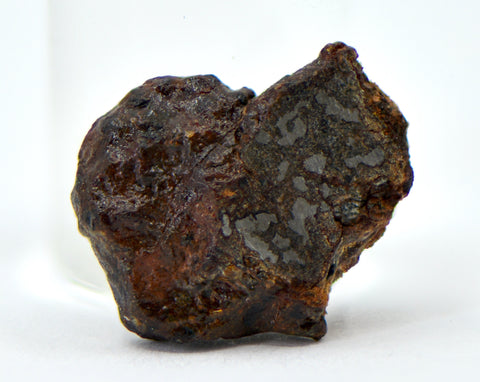8.26g SERICHO Pallasite Meteorite I Sculpted meteorite

On Offer: 8.26 gram Sericho Pallasite Stoney-iron Meteorite.
Type: Pallasite
Name: Sericho
| Sericho | |||||||||||||||||||||||||||||||||
|---|---|---|---|---|---|---|---|---|---|---|---|---|---|---|---|---|---|---|---|---|---|---|---|---|---|---|---|---|---|---|---|---|---|
| Basic information |
Name: Sericho This is an OFFICIAL meteorite name. Abbreviation: There is no official abbreviation for this meteorite. Observed fall: No Year found: 2017 Country: Kenya Mass:  2.8 t 2.8 t |
||||||||||||||||||||||||||||||||
| Classification history: |
This is 1 of 46 approved meteorites classified as Pallasite. [show all] Search for other: Metal-rich meteorites, Pallasites |
||||||||||||||||||||||||||||||||
| Comments: | Approved 3 Aug 2017 | ||||||||||||||||||||||||||||||||
Writeup |
Writeup from MB 106:
Sericho 1°5’41.16"N, 39°6’8.30"E Eastern, Kenya Find: 2016 Classification: Pallasite History: In 2016, two brothers were searching for their camels and came across several large, dense stones west of the village of Habaswein and south of Sericho, Kenya. There are no rocks in this area, so they decided they were meteorites. They spent several weeks collecting them with engine hoists and moving them to their homes in Habaswein. Though recognized as meteorites in 2016, the masses had been known to camel-herders for decades. One village elder said that as a child, he and his brothers would play on top of the stones. In early January 2017, Michael Farmer received an email showing a photo of “giant pallasite” weighing 107 kg. He traveled to Nairobi and purchased this stone. Two weeks later he returned to Kenya with Moritz Karl and traveled to Habaswein. Here they were shown more than one ton of specimens stacked in the courtyards of two house compounds. To date, more than 2800 kg has been found. Physical characteristics: To date, masses ranging from <1 to 500 kg have been found in a strewnfield >45 km long, starting several km west of Habaswein and south of Sericho in Isiolo County. The smaller pieces were found nearer to Habaswein, but still in Isiolo County. The villagers continue to find pieces, mostly on the surface. The majority of the pieces are >50 kg. The meteorites found on the surface show minimal weathering, with patches of fusion crust on the metal. Most stones are blocky, exhibiting a few broad regmaplypts. Several flight-oriented specimens were found, including a 129 kg and two 16 kg stones. Petrography: Slices from several stones show similar metal/olivine ratio, averaging near 70 areal% olivine and <1 areal % chromite. One 15 × 21 cm slice shows regions with ~95 areal% olivine. Olivine grains are largely rounded, less commonly euhedral, and gemmy green to orange. Grains are typically 0.5 to 1 cm across, though a few range up to 4 cm. One slice shows a 5-cm cruciform-shaped chromite. Metal is dominated by swathing kamacite around the olivine, with pockets of dark-etching plessite. Rare metal-rich regions show well-developed Widmanstätten pattern. Accessory troilite and schreiberstite. No large metal veins or metallic masses have been seen. Geochemistry: (L. Garvie, A. Wittmann, D. Schrader, ASU) Olivine Fa12.3±0.1, FeO/MnO=57.4±5.4, Cr2O3=0.03±0.01, n=15; kamacite Ni=7.1±0.6 wt%, Co=0.81±0.02 wt%, P=0.06±0.02 wt%, n=17; and schreibersite (Fe1.51Ni1.45Co0.01)P, n=3. Classification: Pallasite, low weathering. Specimens: 48 g at ASU; >1600 kg with Michael Farmer, Thomas Strope, and Moritz Karl; 143 g, 129 kg, and 23 kg stones at the Maine Mineral and Gem Museum; 1344 g at MNHNP (two stones of 694 and 650 g); another 82 kg with an anonymous owner. |
||||||||||||||||||||||||||||||||
| Data from: MB106 Table 0 Line 0: |
|
||||||||||||||||||||||||||||||||
We Also Recommend

